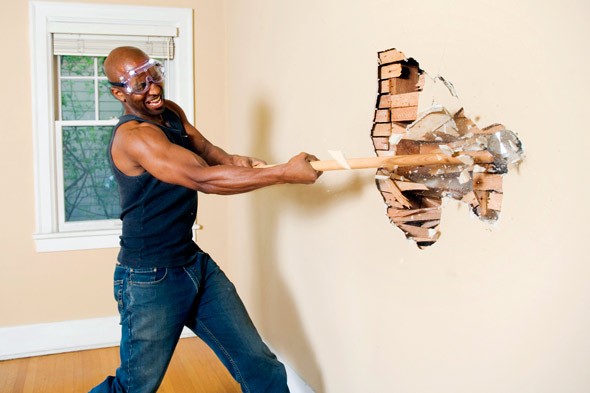There comes a time when you get bored at your old property. You may want to repaint your home, pry out the old vinyl tiles, install some new shelves, or add an additional room. Or perhaps, you might feel that your property needs a total makeover.
Remodeling a house is an exhilarating experience. The excitement of knowing that your home will soon have a fresh new look is simply hard to describe. The ultimate result of a remodeling project done right drastically improves your property’s look, increases its functionality, and boosts its property value.
But when you undertake a home remodeling project, you generally produce a lot of waste materials. Chunks of concrete, pieces of wood, broken tiles, paint flakes, and other waste materials account for 22% of all construction and demolition debris generated in the US, as per the Environmental Protection Agency (EPA). It’s also disappointing to note that 30 % of landfill waste originates from construction projects, including home renovation endeavors.
It’s virtually impossible to avoid generating waste when remodeling a home. However, you can make remodeling-related waste management a lot easier and friendlier to the environment if you follow these tips.
Plan ahead
It’s always better to create a plan before implementing the task. Such a plan may include the timetable for the project, the budget for the project, what materials should be bought, and how much of such materials you should buy given the size and complexity of the endeavor.
Think of other projects that could piggyback on your main project. For example, if your main remodeling project is floor tile replacement, you can piggyback a project about creating a platform for your barbecue grill in your yard. In that way, you can use the broken pieces of tiles as filling material for your barbecue area.
In addition, it’s a good idea to include an inventory of old items that you can sell off before the remodeling project starts.
By creating a detailed plan about your remodeling project, you can help reduce significant amounts of waste while saving a lot of money.
Recycle construction and demolition debris
According to updated waste generation and recycling statistics, the US generates 3 times more waste materials than the global average. Many of these materials are actually recyclable, and construction and demolition debris is one of them.
Before relegating the waste materials from your remodeling project to the municipal waste disposal pickup schedule, check first if you can recycle them. Mainly, construction and demolition waste can be used as an excellent filling material. For example, while your kitchen is being demolished to give way to a new one, you can use the resulting debris to create a garden pathway. That way, you can reduce your expenses or shave off the budget for filling material entirely.
Ask your friends or neighbors if they have construction projects of their own. If their projects require some sort of filling material, you can then give them your construction debris.
Sell old furniture, appliances, and decorations
Your remodeling project may involve a change in furniture, appliances, fixtures, and decorations. Rather than throwing them away, why not make money out of them? Organize a garage sale and sell them. There are people who are on the lookout for certain kinds of items, and yours might just be the one they’re looking for.
Antique items are prized among many collectors, and people often pay lots of money to have one. Keep this in mind when you plan to let go of your old furniture, appliances, fixtures, decors, and accessories. If holding a garage sale is somehow impractical, you can head off to a shop that specializes in buying and selling antique items.
Revitalize old furniture and fixtures
That old cupboard looks out of place in your newly renovated home. But take a moment’s pause prior to throwing it away. Perhaps it just needs a few simple repairs and a new coat of paint to make it look stunning again. Perhaps it just needs a new knob, handle, or rail to make it work again.
You can also check out interior design magazines and websites for ideas. There are cool trends today wherein classical pieces are incorporated in contemporary home architecture. Although the idea sounds weird, it does look visually appealing and unique.
Use reclaimed wood
Wood from your old doors, wall panels, and support beams can be given a second life, especially if they’re still in good condition. Use them to construct patio furniture such as chairs, lounges, and coffee tables.
Doors and panels that have carved designs can be repurposed into wall decorations. Beams can be cut up and re-constructed as wooden fences and railings for your decks.
Donate waste paint
Having a lot of waste paint can be avoided if you don’t buy too much in the first place. Before starting your repainting project, estimate the minimum amount of paint you need for the task; an experienced handyman or painter can help you with this.
In general, it’s better, cheaper, and more eco-friendly if you purchase too few cans of paint rather than too many. After all, if you lack paint, you can always go back to the hardware to buy more. That is way more economical and convenient than storing or getting rid of excess paint.
But what if you do have extra cans of paint? Well, you can give them to friends and neighbors who have repainting projects on their own. You can also donate them to a charitable institution, particularly the Habitat for Humanity, an organization that aims to build homes for unfortunate people all around the world.
Empty paint cans with no paint? You can recycle them into plant pots. Punch some holes at the bottom to allow excess water to drain out. Add a layer of gravel and sand followed by another layer of fertile loam. You can then plant your favorite vegetables, berries, flowers, or ornamental plants in the repurposed paint cans.
All construction projects, such as remodeling your home, generate a lot of debris. But by following the simple tips above, you can help lessen waste material. At the same time, you can also save a whole lot of time, money, and effort on your project.
















